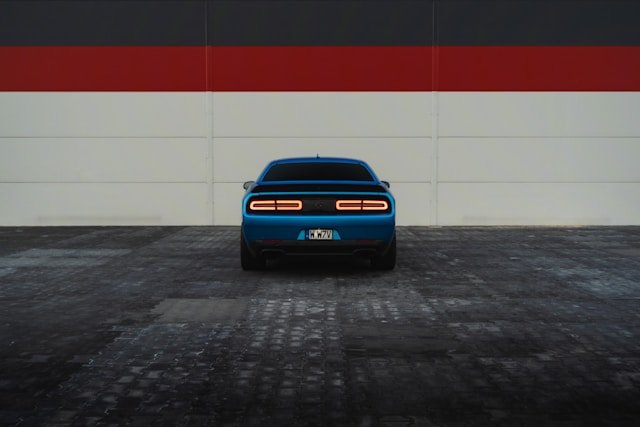For decades, “muscle car” meant something very specific: a big American coupe with a V8 under the hood, rear-wheel drive, and enough torque to roast the tires at a stoplight. The sound of a carbureted big block or a fuel-injected HEMI wasn’t just background noise — it was part of the identity.
From the Pontiac GTO and Chevy Chevelle SS to the Dodge Charger and Plymouth ’Cuda, muscle cars were loud, raw, and unapologetic. If you grew up in the ’60s or ’70s, you probably still remember the sound of a V8 rumbling through the neighborhood on a Friday night.
But now, Dodge — the same brand that gave us the Challenger Hellcat and Charger SRT with 700+ horsepower — is saying the future of muscle might not involve gasoline at all.
Meet the Dodge Charger Daytona SRT

In 2022, Dodge revealed the Charger Daytona SRT Concept, an all-electric car they proudly called the future of American muscle. The car has the aggressive two-door coupe styling you’d expect, complete with wide stance, sharp lines, and that unmistakable Charger presence.
But under the skin, everything is different. Instead of a supercharged HEMI, the Daytona SRT uses an all-electric powertrain. Dodge hasn’t released final specs yet, but they promise it will deliver performance numbers that rival or even exceed the Hellcats. Instant torque, all-wheel drive, and futuristic acceleration are all part of the package.
The “Fratzonic” Sound — Trying to Replace the V8 Rumble
Here’s where the debate really starts. Dodge knows that muscle car fans don’t just care about speed — they care about the experience. So they developed something called the Fratzonic Chambered Exhaust, an electronic sound system that pumps out up to 126 decibels of artificial “engine” noise.
In other words, the Charger Daytona SRT doesn’t roar naturally — it pretends to roar. Some say it sounds futuristic and aggressive. Others say it’s like a rock band playing through a speaker instead of live on stage: technically loud, but not the same.
Why Dodge Says Electric = Muscle
Dodge’s argument is simple: muscle has always been about performance, not just engines. In the ’60s, it was about putting the biggest motor into a mid-size car for maximum speed at a reasonable price. Today, they say, performance means electric. EVs can produce instant torque, rocket-like acceleration, and 0–60 times that leave even supercharged V8s in the dust.
From that perspective, the Charger Daytona SRT is just the next step in the evolution of muscle cars. It’s about going faster, quicker, and harder — no matter what’s under the hood.
Why Many Fans Aren’t Convinced
But for traditionalists, muscle cars aren’t just numbers on a spec sheet. They’re about:
- The sound — the deep, throaty growl of a V8.
- The feel — the vibration through the steering wheel and the raw connection to the engine.
- The ritual — popping the hood, tuning a carburetor, smelling gasoline in the air.
For them, an electric Dodge may be quick, but it won’t feel like muscle. Without the visceral rumble, the culture around muscle cars — the car shows, the weekend garage tinkering, the shared roar on Main Street — risks being lost.
The Bigger Picture: A Changing Industry
It’s not just Dodge. The entire auto industry is moving toward electrification. Ford has already built the Mustang Mach-E, Chevrolet is developing an all-electric Corvette, and GM has pledged to go mostly electric in the coming decades.
Governments are tightening emissions rules, gas prices remain unpredictable, and automakers are under pressure to deliver zero-emission vehicles. Dodge may not have had a choice — either adapt muscle cars for the EV era, or watch them disappear altogether.
So, Is This the Future?
The truth is, no one knows yet. The Charger Daytona SRT might become a pioneer, showing that muscle cars can survive and even thrive in an electric age. Or it could be remembered as the moment when “muscle” lost its soul.
For some, it’s exciting: the chance to see performance reach new levels. For others, it’s bittersweet: the end of the V8 soundtrack that defined an era.
Final Thoughts
The debate around the Dodge Charger Daytona SRT is bigger than one car. It’s about what we really mean when we say “muscle.” Is it just about raw performance numbers — or is it about the experience of driving something loud, mechanical, and alive?
One thing’s for sure: Dodge has sparked a conversation that every American car fan over 45 is having right now. The future may be silent — or it may roar through a speaker — but the muscle car spirit is not going away without a fight.










